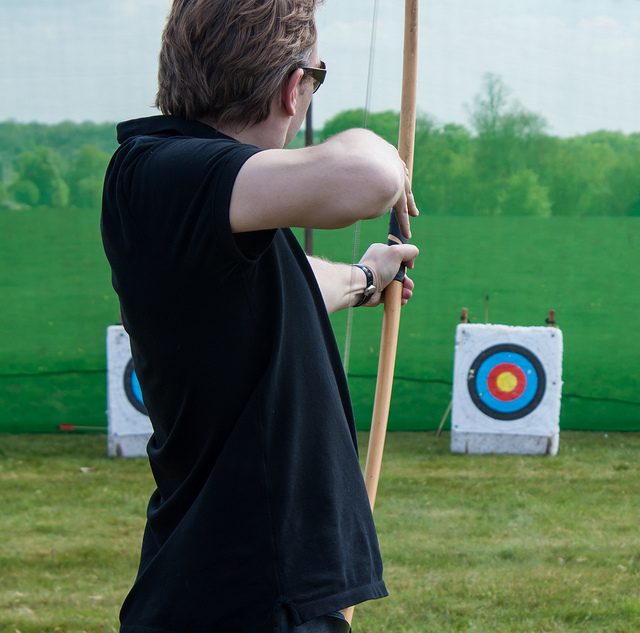
by Jackson | Aug 26, 2013 | Choosing a bow
Archery is a sport that combines skill, athleticism, tradition and whimsy. There is something romantic about the ability to pick up a bow, aim it, and have the arrow fly gracefully through the air, landing precisely where you intended it to land. If you are thinking about taking up this sport, you are going to first need to understand some of the basics– namely, the sort of equipment that is used as a part of the sport. The type of bow you chose can have a side effect on how you play the sport, and choosing long bows can give you a particular edge.
Long Bow Types
There are three types of long bows and each is distinct, making it necessary to have keen knowledge of each to consider yourself a true archer. The three main types are the stick, composite/laminate, and modern/breakdown. The differences in these three are based on design and how each is made. For example, a stick long bow is made of one solid piece of pliable wood, and is considered by most to be the more traditional method of long bow design. The composite/laminate is a type of bow made from a mixture of woods, with a laminate top for protection. And the breakdown bow is a piece of equipment that can be taken apart for easy storage and transportation.

Design
The longbow is often made using just one single piece of wood, meaning it can be put together incredibly quickly. For those who are skilled at the art, a longbow can be crafted in just a matter of hours. Longbows have slim limbs and a narrow cross-section, and are made of woods with higher than average elasticity and flexibility. Yew is a very popular type of wood used in longbow craftsmanship. Wooden laminated longbows are also gaining in popularity, and are often made by combining two separate types of wood into one.
What to Look For
The long bow is a great choice of bow due to its precision, lightweight feel, value for your dollar and traditional design. When shopping for this type of bow, pay attention to a few features. You want smooth pulling, about 2 ½ to 3 pounds per each inch of draw, and a nice sturdy bow length as well. You will also want to pay attention to wood types used, to get the best value for your money.
Where to Buy
Longbows can be found at many types of vendors, and where you buy will most likely have an impact on the type and quality of bow you end up with. A specialty store is a good first bet to start with, as shops that specialize in archery equipment will typically carry top of the line pieces that perform beautifully. However, these shops are generally going to be your most expensive option. For some cheaper alternatives, consider chain athletic stores, secondhand shops, or even online retailers, where you can often get great deals so long as you know what you are looking for ahead of time.
Upkeep
Once you have your prized longbow in your hands, it is important to now take proper care of it. With the right upkeep, this bow can stay in pristine condition for years to come, and you will be assured to get your money’s worth out of your investment. Start by purchasing a sturdy case where you can store the bow when it is not in use and keep it protected from the elements. Some basic bow cleaning supplies can also be purchased from the vendor you buy the bow from, as can a good wood polish to help the bow keep its shine.
Archery is a sport not always at the front of everyone’s mind, but it is a sport any serious athlete should consider. And choosing a longbow as your archery equipment of choice gives you a serious edge, as it has a sleek design, powerful release, and illustrious past. You can find high quality longbows at a number of retailers, and this equipment does not have to break the bank. Consider this option if you are thinking of starting to get into archery, and you will not be sorry. The longbow is attractive, quick, and a bow you will be proud to carry.

by Jackson | Aug 19, 2013 | Choosing a bow
There are many types of bows to choose from for the archery enthusiast. The recurve bow is a good choice for those who prefer the traditional feel of the bow and arrow and enjoy fine tuning their skills. Recurve bows get their name from the way they are designed. The tips of the bow curve away from the shooter. When the bow is drawn and released, the curved tips lengthen the cast of the arrow, providing energy and increasing its speed. Even after deciding on a recurve bow, there are a number of options available to assure you have a bow that is appropriate for your strength and skill level. It is also important to consider the intended use of the bow when selecting accessories.
Parts of the bow
When discussing the parts of a recurve bow, certain terminology is used when referring to the various segments. The riser is the center part of the bow where the grip and arrow shelf are located. The limbs are the upper and lower parts of the bow. A nock is the place at the end of an arrow where the bowstring is placed when drawing the string to shoot. The belly of the bow is the part that faces the shooter when held properly and the back is the part that faces away from the shooter.One thing to remember when choosing a recurve bow is that a right hand bow is held by the left hand. The string is pulled back by the right hand. The rest for the arrow is located on the left side of the bow.
The AMO length is the standard bow length set by the Archery Manufacturers’ Association. Usually, strings with the same AMO length will fit the bow, but better performance can be delivered if the string is a slightly different length.Usually the bow will have specific information written on it such as the serial number, the AMO length and the bow weight. Recurve bows can be shot at any number of draw lengths. The bow weight can be changed by adjusting the draw length. Typically, the bow weight will change about 5 percent for each inch the draw length is changed. The distance from the string across to the farthest point of the handgrip is called the brace height. To adjust the bow, the string is twisted, which changes the string length and therefore, the brace height. Decreasing the brace height will also reduce the draw weight. In addition, the arrow speed is increased due to the extended period it is being pushed forward by the bow string. A reduced brace height normally makes the string hit your hand though. Adjusting the bow is necessary to achieve optimal performance from the bow. This entails a combination of repositioning the nock set on the string, changing the length of the string, the arrow rest or the type of arrow used.

What will you do with your bow?
The type of recurve bow you buy will also depend on its purpose. If the bow is going to be used primarily for target practice, you needn’t be as selective as if it is going to be used for hunting. A bow that is used for hunting will need to have a substantially high draw weight than one that is only intended for target practice. For hunting, the draw weight needs to be high to add enough force behind the arrow that it will penetrate the skin, tissue or bone of the prey at 20 to 30 yards. While a bow with a lower weight might suffice for hunting, it will decrease the distance over which you can effectively shoot. Usually a draw weight of 40 pounds or more is needed to hunting. A beginner is not always able to use a bow with a draw weight of 40 pounds. If this is the case, you can start out with a lower draw weight and build up with a little practice.
Another consideration is what types of accessories, if any, you plan to buy for the bow. Some bows come with pre-drilled holes for sights. Take-down bows are also available which are easy to transport and store. They allow the limbs to be disassembled from the riser. The recurve bow is highly recommended because it is manufactured from the highest quality materials and provides superior performance. I always recommend getting a bow case to make your bow stay in better condition longer.

by Jackson | Aug 7, 2013 | Archery Accessories
After you’ve gone to all the work of getting a nice bow you should make sure and protect your investment. Your bow can give years of enjoyment, so just make sure to take care of the things you own. There are a few features that you want in bow cases and these are the things that you should look for.
Features to look for include:
- Level of protection
- extra space
- weight
- Proper fit
- Value
- Best use
There are two different types of cases. Hard cases and soft cases. Each has its own purpose and doesn’t work for all situations. What you want to find is the case that covers as many of your needs as possible. If you need to carry your bow out into the field a long distance, then the soft case will be better. If the case will mostly be for storage into and out of your vehicle, then a hard case would be a good choice.

A hard case
The hard bow case is heavy and very sturdy. You can stack it out-of-the-way and it will be very safe.


The pros: It has an increased amount of protection for your bow. Almost nothing is going to crush your bow inside. You don’t have to worry about water damage. Many of the hard cases also have space built-in for your arrows. These are great for long-term storage, throwing the bow in with other hunting or camping gear, and piece of mind.
The cons: You don’t have much extra space and its very difficult to squeeze extra things in. Hard cases are heavier and can be bulkier than a soft case. The other problem is several people have to take their bow apart to fit into the case. The stabilizer, quiver, and sometimes the sight must be removed for the bow to fit. You can buy an extra-large case to help compensate for these issues, but if you have a larger bow it could be a challenge.
I’d recommend something like the SKB Hunter Bow Case if you decide you want a hard case.
The soft case
The soft case offers less protection, but some good options. The case is normally pretty dust proof and water-resistant.


The pros: The soft case is light weight, has extra pockets to put arrows and squeeze in extras. In soft cases like the Primos Soft Bow Case that I recommend, most people can fit their bow in with the stabilizer, quiver, and other extras still attached. It’s great if you need to carry your bow a long distance or if you don’t want the hassle of needing to re attach things all the time.
that I recommend, most people can fit their bow in with the stabilizer, quiver, and other extras still attached. It’s great if you need to carry your bow a long distance or if you don’t want the hassle of needing to re attach things all the time.
The cons: The case is not designed to protect against getting knocked around. That’s why it’s called a soft case. There will be padding inside the case and you will be able to secure your bow in the case just don’t plan to stack things on top of your bow. You will want to buy a small arrow container as well for your arrows. The case isn’t completely waterproof, but that’s completely irrelevant most of the time.
So it really comes down to what your preference is. Both cases will get the job done, except that one will do the job better. Feel free to get both cases if you want. I hope this helps you in deciding what bow case you want.
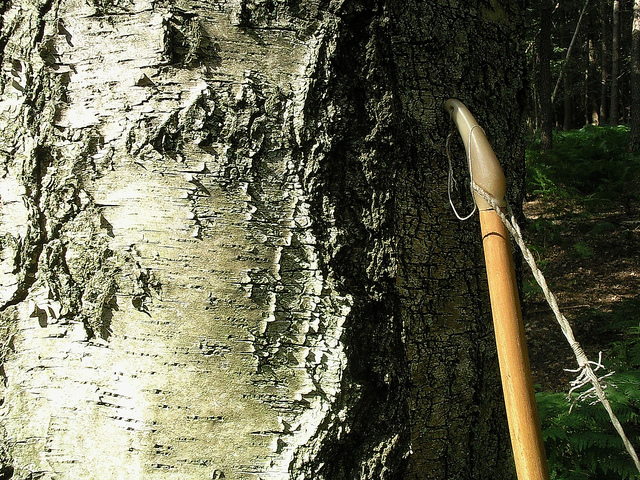
by Jackson | Aug 4, 2013 | Choosing a bow
It’s very important to choose the right bow strings for your bow. I say bow strings because the string is actually several strings put together. These strings make your bowstring last longer and help prevent the string from failing at one time, which could be horrible. Traditional bows are normally the ones with more bow-string problems. With compound bows, you have the same problems, but you can use different materials that last longer so you’re lucky.
Compound bow strings
The compound bow-string is going to consist of two different parts. You should have the cable that runs through the cams and is normally made of metal cable surrounded by rubber. The other part is the one that you pull back on. It will have the peep sight, silencers, serving, and clickers attached to it. This is the part that you want to be strong, wear and tear resistant, and as element proof as possible.
Always check the string before you begin shooting. It only takes a few seconds and can prevent bad things from happening. You are looking for very frayed or broken strings, worn loops around the string connection ends, and debris that could affect performance. If you need a replacement string, you can normally find one online or at a local Bowyer. Here is a replacement string for the Genesis Bow .
.
Traditional bow strings
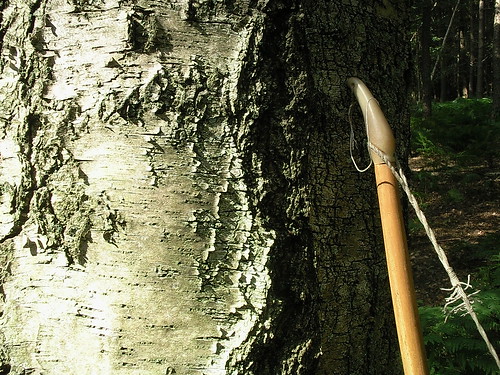
Traditional bows have a few more things to deal with. First, the bow itself must be made so that it can handle the kinds of strings. If you don’t know and you’re making the string, then stick with B-50 Dacron because it can be used on all bows. You can get strings made for your bow or you can make them yourself. If you want a replacement string, you’ll need to know the AMO of your bow. The AMO is not the length of the bow, it is the lengths of the string plus 3 inches. Sadly, this is a guide and not always the right string for your bow. If you’re buying the string, take your bow and try putting on a few of the strings to see which works best. Also, don’t forget that the strings will stretch up to a couple of inches possibly.
There are many different materials for bow strings and they offer different features. Dacron is good for all bows, but it’s slower and can wear out if not maintained well. Fastflight is also popular. It is thinner, stronger, and is faster but this means that it puts more stress on the bow. Only put it on a bow that is made for it, otherwise you could break the bow at the ends and that’s no fun. There are more materials for the strings, but these are the two most popular.
I’ll go over making your own bow-string in another article, but if you’re getting started I like to go with the motto of “keep things simple.” You’ll have a lot more fun if you just get the bow-string you need so that you can get out and go shooting.
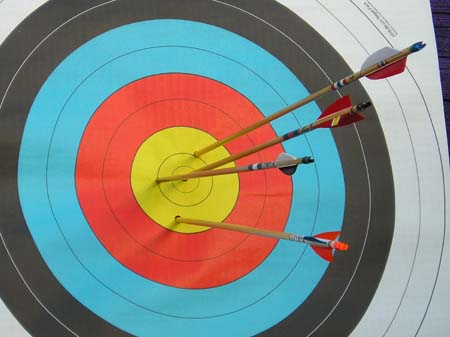
by Jackson | Aug 3, 2013 | Choosing a bow
Shooting a bow and arrow without knowing where it will end up is a scary thing to do. You can greatly increase your aim and skill by using good bow sights. I’m focusing on compound bows, but you can apply many of the principals to a traditional bow as well. There are several different types of sights and many of them have several features. It’s not necessary to use all the features in a sight, but it’s nice to have them there just in case.
Start with the bow
First thing to do is look at the bow you’re shooting and see if it has mounts for a sight. You might not have the same mount on every bow or you could have some damage that might need to be addressed first. If there is any damage and you’re not sure about being able to fix it, you should find a local archery shop that can handle repairs.
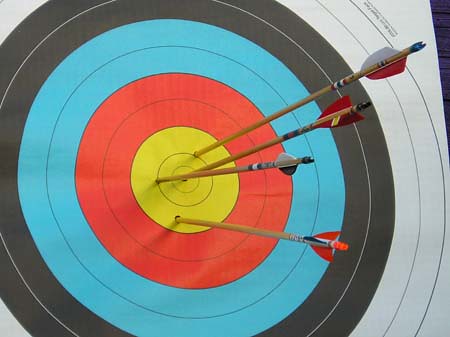
Check the peep
The peep sight is the little loop that you have placed in your string which you look through. This piece will go close to your eye and needs to line up correctly. You will be looking through this same peep every single time you make a shot. it’s also important that it doesn’t turn or move up and down the string. You can install this yourself or take it to someone. The important thing is to make sure that it ends up doing the same thing every single time you draw your bow back to you. You might also see some bows that have a string attached from the peep to another point. This is to keep the peep lined up every time you draw back.
Different features in sights
Pins are the small parts that stick into the middle of the sight tube and is the end point of the sight apparatus. You can find pins that are vertical or horizontal and with different features. One feature that most people like is the illuminated sight. These pins normally use fiber optics to bend the light into the pin and make it glow. This feature can come in really handy when you are in a low light condition.
Most sights will come with several pins in them. When you are sighting in the bow, you’ll spend a lot of time on each pin so many people choose to only use a couple pins. The important part is to pick a sight pin that isn’t too big. You don’t want the pin to cover up your target so much that you can’t see the target when you’re aiming.
Another feature you will find is a small level that you can see. You want your bow to be level when your shooting. This is important for compound bows and will help you have more consistent shooting results.
For me, a great value and price for a good sight is the Trophy Ridge Punisher 5 Sight . You get a sight with pins that aren’t too big and they are fiber optic. You can also replace these while you’re out shooting if you need. The other plus is that it’s made for either right or left hand. That means it comes in handy if you decide to upgrade your sights and want to give it to someone else.
. You get a sight with pins that aren’t too big and they are fiber optic. You can also replace these while you’re out shooting if you need. The other plus is that it’s made for either right or left hand. That means it comes in handy if you decide to upgrade your sights and want to give it to someone else.












